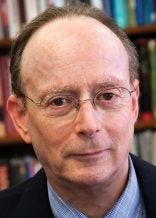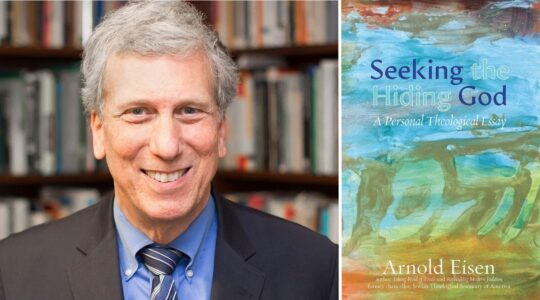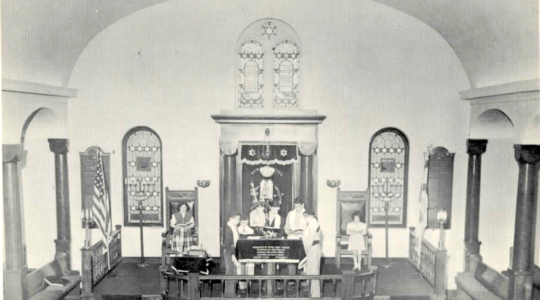In early March, Sid Schwarz, a rabbi and social entrepreneur, brought together 60 creative Jewish activists from around the country to test a theory of his.
As a senior fellow at CLAL (the National Jewish Center for Learning and Leadership) and author, most recently of “Jewish Megatrends: Charting the Course of the American Jewish Community,” Schwarz has observed that while there is a sharp decrease in synagogue affiliation among young people, there is also a yearning among many for what he calls “communities of meaning. These communities find expression in a variety of activities, from prayer and meditation to social justice to farming and environmental sustainability.
Indeed, a small but growing number of young Jews characterize their fervent commitment to Jewish values and ecology as “Earthodox.”
Schwarz wondered if the leaders involved in these different attempts at reinventing Jewish life had enough in common to form the nucleus of an American Jewish renaissance. So he set about to host a retreat of the top practitioners of these pockets of new Jewish energy and find out.
“First, I wrote up a brief description of what I’ve been seeing,” Schwarz recalled the other day. He noted that “growing percentages of people describe themselves as ‘spiritual but not religious,’” and synagogues and Jewish institutions are “suffering from a loss of relevance.” But this is happening “at a time when trends in American society are making the need for spiritual community greater than ever before.”
Looking for co-sponsors, he reached out to four groups that have had success in tapping into aspects of Jewish heritage in ways that attract young people: Bend the Arc, which has a focus on social justice; Hazon, whose agenda is the environment; the Institute for Jewish Spirituality, which is dedicated to spiritual practice; and Mechon Hadar, an educational institution promoting egalitarian prayer and Torah study.
They agreed to partner with CLAL in what Schwarz called “a consultation.” So last December, with funding from the William Davidson Foundation, Schwarz invited 100 men and women, with the hope of attracting 50, to the Isabella Freedman Jewish Retreat Center in Falls Village, Conn., in early March to discuss and respond to his theories.
“I set a high bar by giving people only a week to decide and asking them to write two essays.” One was on whether they have built a spiritual community and, if so, how it differs from other groups sharing the same goal. The second was to write a response to an essay Schwarz included from his “Megatrends” book, agreeing or disagreeing with his thesis describing the decline of mainstream synagogues and Jewish organizations and the emergence of “innovation portals” younger people are seeking.
Schwarz characterizes those key entry points as chachma (wisdom), kedusha (holiness), tzedek (good works/justice) and kehillah (community).
To his surprise, 60 invitees accepted the invitation within a week. The result of the March 6-8 retreat — three days of intense discussion, prayer, networking and discovery — was deeply moving for the participants and encouraging to Schwarz, who believes it could lead to “a new model of spiritual community.”
Schwarz isn’t the first to walk this path. For example, the recently launched Jewish Emergent Network is an attempt to stitch together seven loosely synagogue-based innovative Jewish communities in cities around the country into something of a national movement. But Schwarz’s emphasis on pulling in millennials and others from the margins of Jewish life may represent a new approach.
Support the New York Jewish Week
Our nonprofit newsroom depends on readers like you. Make a donation now to support independent Jewish journalism in New York.
‘On The Same Essential Quest’
Rachel Timoner, rabbi of Congregation Beth Elohim (Reform) in Park Slope, Brooklyn, found the experience “inspiring and reassuring, a brilliant distillation of this moment for American Jews today.”
She didn’t know most of the participants before the retreat and was one of the few congregational rabbis present. But she discovered that “we were on the same essential quest,” which she called an effort to “draw on our tradition and together organize ourselves to find a higher purpose within us and be a real force for justice.”
Schwarz’s concept “fits for me exactly,” she said. “It’s what I am trying to do in my congregation.”
At 45, Rabbi Timoner was in the mid-age range of the participants, all of whom, like so many Jews everywhere, she said, are dealing with questions of “how to live in this world, what do I have to give, and how can I make my life matter.”
Jews will always want answers to those questions, the rabbi said, and “that’s why I’m not worried” about the Jewish future here. “Every generation looks at the next one with pessimism. Every generation is caught in its own conventional place. This is about seeing our same Jewish values and aspirations being expressed” in different ways, ones that reflect contemporary American culture.
“Those who are wringing their hands” over the Jewish future should “come see what is thriving,” Rabbi Timoner said.
For Nigel Savage, executive director of Hazon, who found the retreat “phenomenal,” the key moment was the group’s reaction after a Venn diagram of three circles was posted on a white board. The circles represented the three points Schwarz had described as components necessary for an emerging spiritual community: to be rooted in Jewish wisdom and practice; to help people realize their full potential; and to inspire people to work for a just and peaceful world.
When asked which circle they would place themselves in, virtually every participant put himself or herself in the middle of all three, Savage said.
“It was powerful — a turning point,” he noted, because it deepened the connections within the groups and indicated how similar the participants’ personal and communal goals were.
Blair Nosan, who runs a project in Detroit called ShtetlKettle, which combines her love of the food culture and serious Jewish learning, said the retreat enabled her to integrate those passions with her commitment to social justice. “It spoke to me in the work I try to do,” she said. Though she had thought of herself as on the fringe of Jewish life, she said that in the retreat she found a number of peers in their late 20s and early 30s who shared a deep involvement in “Torah, personal growth and social change.”
Much of that change expressed at the retreat reflected a commitment to progressive politics, and made for some tensions in discussing the Israeli-Palestinian conflict. The topic was not dealt with directly, but Nosan said she felt “it was safe to talk about Israel and Palestine,” noting that in her home community “even using the word Palestine is seen as a threat.”
Support the New York Jewish Week
Our nonprofit newsroom depends on readers like you. Make a donation now to support independent Jewish journalism in New York.
Are We Different?
Is the Jewish community unique in its widening gap between institutional Judaism and those seeking new forms of spirituality?
Not at all, according to Casper ter Kuile, who along with Angie Thurston, is affiliated with Harvard Divinity School and a co-author of “How We Gather,” a study of the changing landscape of religions in the U.S. The report focuses on the overall millennial phenomenon of identifying as “spiritual but not religious.”
“The Jewish community is different from other faiths in that it is far ahead in thinking about what spiritual communities can look like,” said ter Kuile, who attended the March retreat. “It was exciting to see diversity nourished.” He speculated that Christian communities are more resistant to change, in part because of fear and suspicion about what may result.
“The question for each faith community,” he said, “is whether it is serving the real needs of people or continuing in ways that are failing.”
Noting that 3,500 churches in the U.S. close every year, ter Kuile believes that religions have to adapt. “There is always the issue of which traditions to hold on to and which to let go, but those who don’t get ahead of this often suffer the consequences.”
Sid Schwarz is already on a new path. Through CLAL, he has formalized his work as The New Paradigm Spiritual Communities Initiative (NPSCI), designed to support the development of “covenantal communities.”
He is planning several more retreats, launching a website with weekly blogs, and has brought in a researcher to “map the field” in search of existing Jewish groups that might meet his definition of spiritual community. He is also considering a conference to train leaders and hopes to see the initiative grow into a model for synagogues and communities.
“Change always happens from the margins,” Schwarz noted. “Most of these groups we’re working with are marginal to the mainstream Jewish community, but decades from now” their innovations may become the norm.
He said he felt challenged by the retreat participants at the outset, especially among the younger people. “I stood accused, in a sense, in that I am a white, straight, married male, 62 years old. ‘What’s his agenda? What do we have in common with him?’ There was a lot of suspicion.”
He said he sensed “a deep woundedness,” especially among a number of the younger people, who felt alienated from the mainstream community. For some it was about LGBT issues, and for many it was over criticism of Israel. “It is sad that the organized Jewish community has made so many creative and thoughtful young Jews feel marginalized," Schwarz said. "We need to create a much larger tent in American Jewish life." But the outcome was enthusiasm for the new initiative.
He recalled a comment Casper ter Kuile made to him at the retreat when asked why the pull toward alternative forms of spiritual expression and connection is so strong today. “Because religions and religious leaders have not been doing their jobs,” he told Schwarz. “The great majority of young people are just walking away and the others are creating new forms.”
Support the New York Jewish Week
Our nonprofit newsroom depends on readers like you. Make a donation now to support independent Jewish journalism in New York.
Or as ter Kuile noted in our interview: “We frame it as a question of courage — are you committed to fighting change or are you prepared to shift?”
Inset: Participants at the retreat. Courtesy of Sid Schwarz
The New York Jewish Week brings you the stories behind the headlines, keeping you connected to Jewish life in New York. Help sustain the reporting you trust by donating today.





